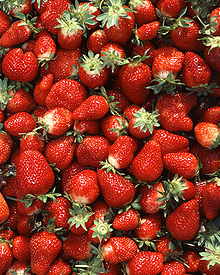Japan
Few nations on Earth have had a more colorful history than Japan.
Settled by migrants from the Asian mainland back in the mists of prehistory, Japan has seen the rise and fall of emperors, rule by samurai warriors, isolation from the outside world, expansion over most of Asia, defeat and rebound. One of the most war-like of nations in the early twentieth century, today Japan often serves as a voice of pacifism and restraint on the international stage.
Capital and Major Cities:
Capital:
Tokyo, population 12,790,000 (2007)
Major Cities:
Yokohama, population 3,632,000
Osaka, population 2,636,000
Nagoya, population 2,236,000
Sapporo, population 1,891,000
Kobe, population 1,529,000
Kyoto, population 1,465,000
Fukuoka, population 1,423,000
Government:
Japan has a constitutional monarchy, headed by the Emperor. The current emperor is Akihito; he wields very little political power, serving primarily as the symbolic and diplomatic leader of the country.
The political leader of Japan is the Prime Minister, who heads the Cabinet. Japan's bicameral legislature is made up of a 480-seat House of Representatives, and a 242-seat House of Councillors.
Japan has a four-tier court system, headed by the 15-member Supreme Court. The country has a European-style civil law system.
Yasuo Fukuda is the current Prime Minister of Japan.
Population:
Japan is home to about 127,500,000 people. Today, the country suffers from a very low birth rate, making it one of the most rapidly aging societies in the world.
The Yamato Japanese ethnic group comprises 98.5% of the population. The other 1.5% includes Koreans (0.5%), Chinese (0.4%), and the indigenous Ainu (50,000 people). The Ryukyuan people of Okinawa and neighboring islands may or may not be ethnically Yamato.
An estimated 360,000 Brazilians and Peruvians of Japanese origin have also returned to Japan, most famously former Peruvian President Alberto Fujimori.
Languages:
The vast majority of Japan's citizens (99%) speak Japanese as their primary language.
Japanese is in the Japonic language family, and seems to be unrelated to Chinese and Korean. However, Japanese has borrowed heavily from Chinese, English, and other languages. In fact, 49% of Japanese words are loan-words from Chinese, and 9% come from English.
Three writing systems coexist in Japan: hiragana, used for native Japanese words, inflected verbs, etc.; katakana, used for non-Japanese loanwords, emphasis, and onomatopoeia; and kanji, which is used to express the large number of Chinese loan-words in the Japanese language.
Religion:
95% of Japanese citizens adhere to a syncretic blend of Shintoism and Buddhism. There are minorities of under 1% of Christians, Muslims, Hindus, and Sikhs.
Shinto is the native religion of Japan, which developed in prehistoric times. It is a polytheistic faith, emphasizing the divinity of the natural world. Shintoism does not have a holy book or founder.
Most Japanese Buddhists belong to the Mahayana school, which came to Japan from Baekje Korea in the sixth century.
In Japan, Shinto and Buddhist practices are combined into a single religion, with Buddhist temples being built at the sites of important Shinto shrines.
Geography:
The Japanese Archipelago includes more than 3,000 islands, covering a total area of 377,835 square kilometers. The four main islands, from north to south, are Hokkaido, Honshu, Shikoku, and Kyushu.
Japan is largely mountainous and forested, with only 11.6% of its area arable land.
The highest point is Mt. Fuji at 3,776 meters (12,385 feet). The lowest is Hachiro-gata, at 4 meters below sealevel (-12 feet).
Positioned astride the Pacific Ring of Fire, Japan features a number of hydrothermal features such as geysers and hotsprings. It also suffers frequent earthquakes, tsunamis, and volcanic eruptions.
Climate:
Stretching 3500 km (2174 miles) from north to south, Japan includes a number of different climate zones. It has a temperate climate overall, with four seasons.
Heavy snowfall is the rule in the winter on the northern island of Hokkaido; in 1970, the town of Kutchan received 312 cm (over 10 feet) of snow in a single day! The total snowfall for that winter was more than 20 meters (66 feet).
The southern island of Okinawa, in contrast, has a semi-tropical climate with an average annual temperate of 20 Celsius (72 degrees Fahrenheit). The island receives about 200 cm (80 inches) of rain per year.
Economy:
Japan is one of the most technologically advanced societies on Earth; as a result, it has the world's second largest economy by GDP (after the U.S.). Japan exports automobiles, consumer and office electronics, steel, and transportation equipment. It imports food, oil, lumber, and metal ores.
Economic growth stalled in the 1990s, but since has rebounded to a quietly respectable 2% per year.
The services sector employs 67.7% of the work-force, industry 27.8%, and agriculture 4.6%. The unemployment rate is 4.1%.
Per capita GDP in Japan is $38,500; 13.5% of the population lives below the poverty line.
to be continue...
while wating for tomorrow why dont you try browsing our homepage @ http://www.prosperjp.com/ to find you favorate cars
uploaded by:304



